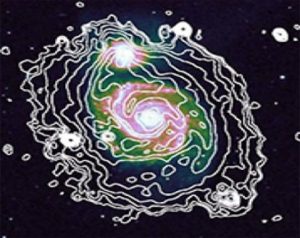A research team at the University of Southampton, along with astronomers from the Max Planck Institute of Radio Astronomy, have recently used a low frequency array radio telescope (LOFAR) to observe the “Whirpool Galaxy.” Researchers acquired an image of a galaxy that was below 1 GHz. Because the LOFAR is highly sensitive, researchers were able to trace a galaxy from 40,000 light years away.

“Low-frequency radio waves are important as they carry information about electrons of relatively low energies that are able to propagate further away from their places of origin in the star-forming spiral arms and are able to illuminate the magnetic fields in the outer parts of galaxies. We need to know whether magnetic fields are expelled from galaxies and what their strength is out there,” David Mulcahy, researcher at the University of Southampton, said.
“This beautiful image, coupled with the important scientific result it represents, illustrates the fantastic advances that can be made at low radio frequencies with the LOFAR telescope. Unravelling the mysteries of magnetic fields is crucial to understanding how our Universe works. For too long, many of the big questions about magnetic fields have simply been untestable and this new era of radio astronomy is very exciting,” Dr Anna Scaife, from the University of Southampton, says.
Until now, low frequencies have been difficult to study at ranges below 300 MHz since the Earth’s ionosphere tends to operate as a blockade of radio waves at such a low-frequency.
“This opens a new window to the Universe where we do not know what galaxies will look like. Maybe we will see how galaxies are magnetically connected to intergalactic space. This is a key experiment in preparation for the planned Square Kilometre Array (SKA) that should tell us how cosmic magnetic fields are generated,” Rainer Beck from the Max Planck Institute of Radio Astronomy, said.




